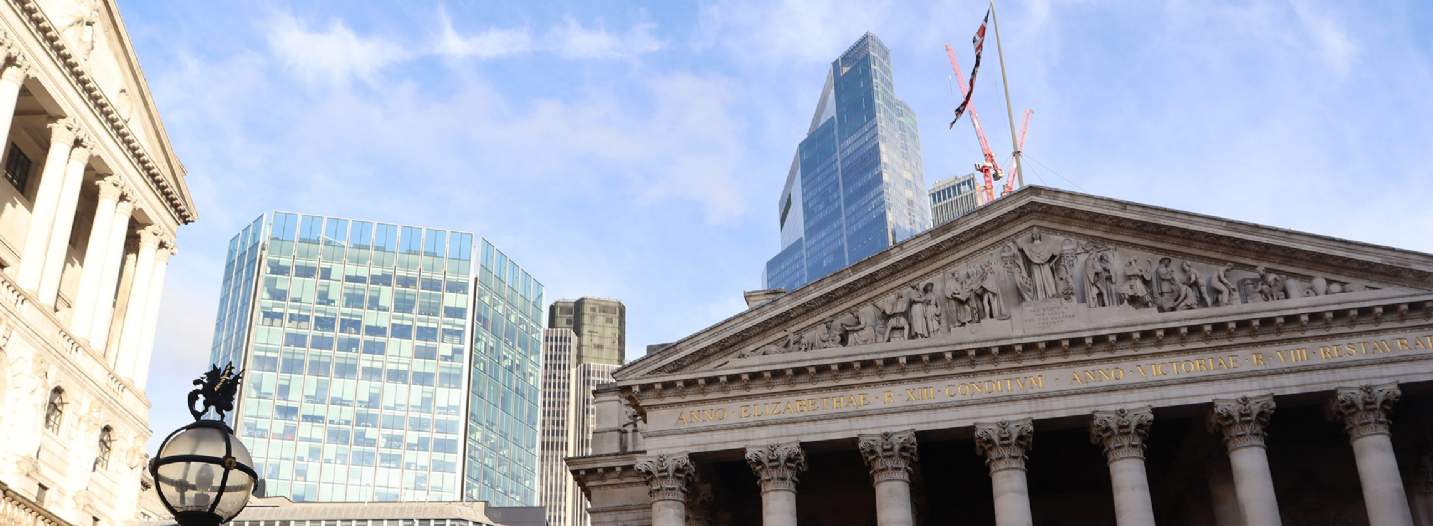Average prime yields edged out by a marginal 4 bps in October to 5.98%, but could they hit 6% by the year end?
Rates 'higher for longer'?
Whilst some positivity, and hopefully stability, can be drawn from the fact that the Bank of England Monetary Policy Committee have voted to keep base rates unchanged at 5.25%, the mood music from the rate-setters is that markets should now expect a period of ’higher for longer’. Indeed, market pricing implies that the bank rate will fall to 4.9% by the end of 2024. But given the market’s poor track record of forecasting the bank rate, we should consider what is more likely, given the economic fundamentals of GDP, wage growth, labour markets and inflation as 2024 progresses. Indeed, based on these fundamentals, many economic commentators are forecasting much sharper falls from Q2 2024 onwards, with some suggesting that 4% by the end of the year is realistic.
Investors will also be monitoring the situation in the Middle East, and notwithstanding the human tragedy playing out, we have already seen oil prices climb to $94 a barrel. Should the conflict spread, we would expect to see further rises, which, in turn, could lead to inflation increasing again.
Closer to home, and in the here and now, last month saw outward movement in prime yields by 25 bps for the provincial office and foodstore sectors, meaning that the Savills average prime yield now stands at 5.98%, the highest level since November 2009. With seven sectors displaying upward arrows, it is all but certain the prime yield will breach the 6% mark by year end.
Why the industrial & logistics prime and secondary rent gap is growing
Despite a fall in take-up during 2023, the industrial and logistics sector has seen rents remain robust. In fact, the somewhat weaker demand brought about by economic uncertainty has meant that occupiers have had the opportunity to be more selective when it comes to their warehouse space. In turn, this has led to a significant gap when it comes to prime and secondary rents as businesses look to prioritise ESG credentials.
While there has always been a rent spread, this has grown considerably from £1.60 per sq ft in 2007 to £2.40 per sq ft in 2023, an increase of almost 50 per cent. At present, average prime and secondary rents sit at £9.32 and £6.95, respectively, signifying the biggest differential on record.
Much like the rest of commercial real estate, we are seeing occupiers place a greater emphasis on quality, with a particular focus on ESG. Third-party logistics providers (3PLs), for instance, must account for this if they are to win customer contracts. Companies are also seeing cost savings from the efficiencies provided by Grade A space, making it an easy decision when it comes to acquiring a new warehouse unit. Also, a modern, well-specified building can make a big difference when it comes to attracting and retaining staff.
Traditionally, the link between supply, demand and location has had a much greater bearing on rental tone. When looking back at the data, periods where rental levels have grown in core markets have largely been driven by the confluence of low levels of vacancy combined with above-average levels of take-up. With location a primary driver, especially with the growth of online retail and last-mile delivery, occupiers have been willing to pay higher rents in areas with limited supply.
With supply rising to its highest level for a decade and take-up reverting back to pre-pandemic norms, it is interesting to see that rents for prime units are continuing to rise. In fact, so far this year, prime rents have increased by 5.8 per cent, compared to just 0.3 per cent for secondary space. What’s more, 2022 saw take-up for second-hand stock account for just 22 per cent, the lowest figure ever recorded.
Landlords and developers should be monitoring this gap closely, particularly if the level of second-hand supply continues to rise. If such units take longer to lease, while also achieving rental levels significantly below prime units, there could well be a case for comprehensive refurbishment or even the redevelopment of stock in order to meet occupiers' ESG requirements.
The total value of the world’s property stood at $379.7 trillion at the end of 2022. Although this is 2.8% less than the year before, the longer-term trend – a rise of 18.7% over the past three years – shows that global property remains a significant store of wealth. Real estate is worth more than the global equity and bond markets combined, and is almost four times the size of global GDP. Commercial real estate fell by 1.8% in 2022, muted by weakening conditions in the second half of the year, but was up 14.4% over the three-year period.
China retains its position as the world’s most valuable real estate market. Given the country is home to 1.4 billion people, it is perhaps not surprising that it accounts for a quarter (26%) of global real estate value. The US takes second slot overall, accounting for 19% of the global real estate market. The G7 countries plus China make up more than two thirds of total global real estate value.
Read the latest update on the Total Value of Global Real Estate on Savills Impacts.
To further discuss the latest insights, contact the UK Investment or Commercial Research team via the Authors panel
